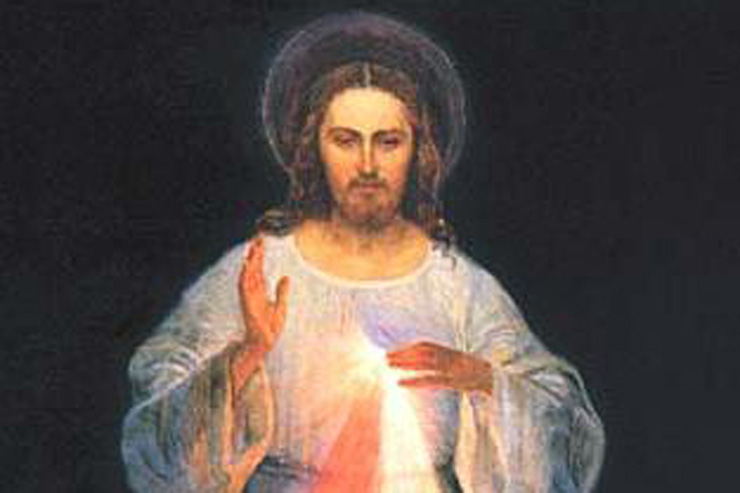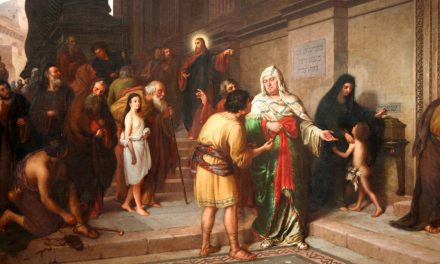
Vilnius Image of Divine Mercy by Kazimierowski
On April 20th, we celebrated Easter Sunday. But the celebration did not end then, it continues. There are presently two Solemnities that are “continued” for eight days (Octave) – that is, days 2 through 8 of the Octave are celebrated liturgically as one would celebrate a Solemnity. One is Christmas and the other is Easter. The Solemnity of Easter is the feast of feasts, the solemnity of solemnities and the Easter Octave runs from Easter Sunday through the Second Sunday of Easter – now also known as “Divine Mercy Sunday” – indeed, the entire Easter Season lasts for seven weeks (50 days) from Easter Sunday to Pentecost Sunday.
Jesus Asks for the Feast of the Divine Mercy
On May 5, 2000, the Congregation for Divine Worship and the Discipline of Sacraments issued a decree which proclaimed the Second Sunday of Easter to be known also as Divine Mercy Sunday. So, on this Second Sunday of Easter, April 27, 2014, we remember and celebrate the Lord’s Divine Mercy as we have done since the decree. Some parishes will offer an additional “Divine Mercy” Mass, but these Masses use the readings and prayers of the Second Sunday of Easter.
All of this came about through the visions of and messages from Jesus Christ given to St. Faustina beginning in 1924 before she entered religious life as a sister. Pope St. John Paul II was instrumental in promoting the Divine Mercy devotions and feast and the cause of sainthood for St. Faustina. This has brought great joy to the Church.
It was Jesus himself, who, in a private revelation to St. Faustina, asked that this feast be observed on the 2nd Sunday of Easter each year: “I want the image solemnly blessed on the first Sunday after Easter, and I want it to be venerated publicly so that every soul may know about it” (Diary 341).
Just three years ago, Pope John Paul II was officially beatified by Pope Benedict XVI on Divine Mercy Sunday, 2011 and today he was canonized along with Pope John XXIII! All praise, honor and glory be to God!
Pope St. John Paul II wrote, “Jesus Christ taught that man not only receives and experiences the mercy of God, but that he is also called ‘to practice mercy’ towards others: ‘Blessed are the merciful, for they shall obtain mercy.’ The Church sees in these words a call to action, and she tries to practice mercy. All the beatitudes of the Sermon on the Mount indicate the way of conversion and of reform of life, but the one referring to those who are merciful is particularly eloquent in this regard. Man attains to the merciful love of God, His mercy, to the extent that he himself is interiorly transformed in the spirit of that love towards his neighbor.” (Blessed John Paul II, Dives in misericordia, #14; 1980)
Plenary Indulgence
From the Decree regarding indulgences attached to devotions on Divine Mercy Sunday…
“To ensure that the faithful would observe this day with intense devotion, the Supreme Pontiff himself established that this Sunday be enriched by a plenary indulgence, as will be explained below, so that the faithful might receive in great abundance the gift of the consolation of the Holy Spirit. In this way, they can foster a growing love for God and for their neighbour, and after they have obtained God’s pardon, they in turn might be persuaded to show a prompt pardon to their brothers and sisters.”
Read more at: http://www.ewtn.com/devotionals/mercy/indulgence.htm
We Should Perform Works of Mercy
The Lord reminds us that we are to be merciful if we expect to receive His mercy. He told Faustina, “I am giving you three ways of exercising mercy toward your neighbor: the first by deed, the second by word, and the third by prayer. In these three degrees is contained the fullness of mercy, and it is an unquestionable proof of love for Me. By this means a soul glorifies and pays reverence to My mercy.” (Diary 742)
He emphasized this obligation on our part: “Yes, the first Sunday after Easter is the Feast of Mercy, but there must also be deeds of mercy, which are to arise out of love for Me. You are to show mercy to our neighbors always and everywhere. You must not shrink from this or try to absolve yourself from it.” (Diary 742)
This message is for each of us, a consolation for us that we be aware of his abundant mercy and also a reminder to perform the works of mercy, particularly as traditionally taught by the Church.
| The Spiritual Works of Mercy | The Corporal Works of Mercy |
| 1. To instruct the ignorant | 1. To feed the hungry |
| 2. To counsel the doubtful | 2. To give drink to the thirsty |
| 3. To admonish the sinner | 3. To clothe the naked |
| 4. To bear wrongs patiently | 4. To shelter the homeless |
| 5. To forgive offenses willingly | 5. To visit the sick |
| 6. To comfort the afflicted | 6. To rescue the captive |
| 7. To pray for the living and the dead | 7. To bury the dead |
Read more about the Divine Mercy, including the Chaplet of Divine Mercy, the Novena of Divine Mercy, the Hour of Mercy, and more… http://www.ewtn.com/devotionals/mercy/feast.htm
Into the Deep…
Editor’s Note: This morning, Pope Francis celebrated the canonization of Pope St. John XXIII and Pope St. John Paul II, fittingly as today is Divine Mercy Sunday. Be sure to also read Fr. Landry’s article marking this momentous occasion.
Into the Deep by Deacon Mike Bickerstaff is a regular feature of the The Integrated Catholic Life™.
You can follow Deacon Mike on Twitter right here:
If you liked this article, please share it with your friends and family using Recommend and Social Media buttons below and via email. We value your comments and encourage you to leave your thoughts below. Thank you! – The Editors














